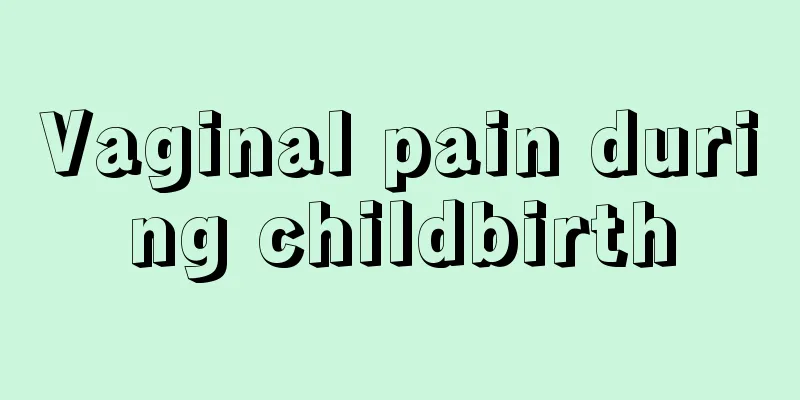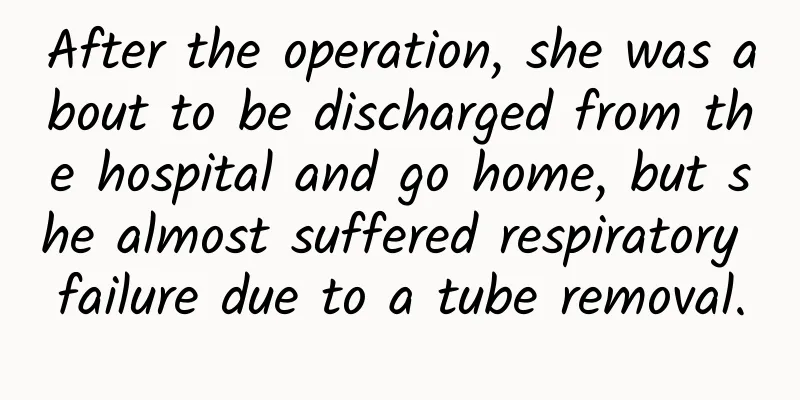Vaginal pain during childbirth

|
Almost everyone knows that if the baby is born naturally, it is through the female vagina. However, this reason will also cause some problems for the mother. For example, some people feel severe vaginal swelling and pain after giving birth. Many times it is caused by the injury during childbirth, but sometimes it is due to postpartum infection. So when a pregnant woman has such a problem after childbirth, what kind of solution should be taken? What kind of pain experience is this? The area where we feel pain is the perineum, which is the area between the vagina and anus. No matter how big or small our baby is, as long as he/she comes into this world through vaginal delivery, our perineum will definitely feel torn and swollen. Or for those of us who had an episiotomy (or perhaps a tear), we spend the first few days after birth getting used to the pain of the wound and the discomfort of the stitches. The pain can range from mild to extreme depending on the individual. For some people, it can go away in about 10 days, while for others it can last for a month. This kind of pain is a really terrible experience, and sometimes it even affects daily urination and defecation. In fact, you are not alone! The perineum has loose tissue, rich blood vessels and nerves, and is particularly sensitive to pain. Most women will experience perineum pain after childbirth. Mainly speaking, there are several reasons for postpartum vaginal pain: 1. Abrasions or lacerations of the perineum during childbirth, or related to episiotomy, can cause wound pain; 2. Perineal edema and tight wound sutures can cause persistent edema pain; 3. Bleeding from the wound forms a hematoma, which can cause obvious swelling and pain; 4. Induration caused by unabsorbed intestinal cord or hyperplasia of fibrous tissue in the wound will cause unabsorbed pain and induration pain respectively after delivery; 5. Perineal abscess formation: When the wound becomes swollen, painful, indurated, and has purulent secretions when squeezed, the pain is particularly obvious, especially when the abscess is immature. How can these pains be relieved? During the recovery period, we must be especially careful to avoid contact with the injured area. Change your sanitary napkin at least every 4 hours. Remember to wash your hands before and after changing, and make sure the sanitary napkin fits snugly and securely to prevent it from moving around and causing more irritation. Rinse your perineum with warm water after urinating and gently dry it with a clean towel instead of toilet paper. Pat dry from front to back each time to avoid bringing bacteria from the anus into the vagina. Rinse the perineum with warm water when you urinate. The water will dilute the urine so it doesn't sting. Start doing pelvic floor muscle exercises as soon as possible after giving birth. This improves blood circulation to the perineum, aiding recovery, and also helps restore flexibility and control to the pelvic floor. When you are at home and no one else is around, try lying in bed without a sanitary pad, with an absorbent bed pad (available in some drug stores) or some old towels placed underneath, and let your perineum "air dry." Taking more showers or baths may also provide relief. Avoid adding salt to your water, as no studies have shown that salt helps in any way, and it can also cause dry and itchy skin. Don't shower for too long, as this will make your perineal tissue wet and delay recovery time. Do not stand or sit for long periods of time. When feeding your baby, you should sit comfortably, or you can choose to feed your baby while lying on your side. If the pain doesn't go away or you develop a fever, see a doctor. Your doctor will first examine the wound to see if it is healing poorly, and may also prescribe physical therapy to help the wound heal and relieve pain. A fever may be a sign of infection, especially if you have stitches or incisions, but good personal hygiene can reduce the risk. Relax, after all, healing takes time. Every new mother recovers in a different way and in a different amount of time, so focus on healing and regaining the strength you need to care for your baby. |
>>: How to treat secondary polyps of vaginitis
Recommend
What should I do if my period hasn't come for two months?
Menstruation is a special period for women, and i...
What is the cause of excessive leucorrhea and what medicine should I take
Many female patients have such symptoms when they...
The benefits of spontaneous abortion
During pregnancy, I believe no one wants to exper...
Don’t be afraid of dizziness, just press these acupoints!
Dizziness is a very common phenomenon in life. Th...
What should you pay attention to after painless abortion
Artificial abortion is a vacuum aspiration proced...
If a pregnant woman likes to eat sour food, is it a boy or a girl?
The mother's body will undergo great changes ...
Can I get pregnant with an ovarian teratoma?
Ovarian teratoma is a tumor that grows in the ova...
What are the symptoms of a displaced uterus?
The most important organ for a woman to conceive ...
What is cervical discharge
We also call the cervix the uterine cervix. The c...
Women who do not control their sexual intercourse are prone to illness
Cervical erosion Cervical erosion is a manifestat...
What is the most taboo after abortion surgery?
Modern women's sexual awareness is very open,...
When influenza A strikes, doing this right is more effective than grabbing oseltamivir
Audit expert: Gu Haitong Deputy Chief Physician, ...
Will itching caused by pubic hair rubbing against the genitals cause inflammation?
Many people will find that their lower body is no...
Can postpartum cold be cured?
Postpartum hand colds can be cured and generally ...









